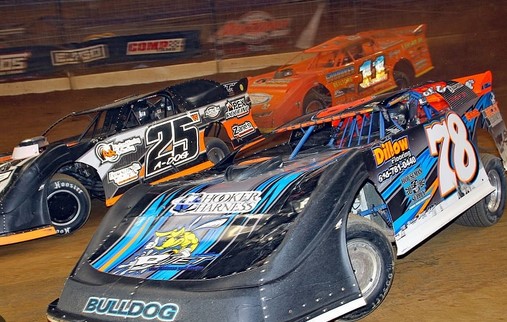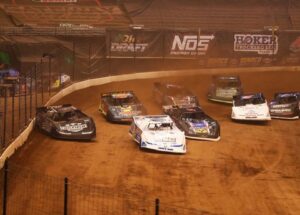
The Grit and Glory of Real Dirt Track Racing
Dirt track racing is a thrilling and gritty motorsport that has captivated fans and racers alike for generations. With its roots dating back to the early days of automotive racing, dirt track racing has evolved into a diverse and exhilarating form of motorsports. In this article, we’ll delve into the world of real dirt track racing, exploring its history, the different types of dirt tracks, and even touch upon the connection between dirt track racing and casino sites.

The Rich History of Dirt Track Racing
Dirt track racing has a storied history that traces back to the very origins of automobile racing itself. In the early 20th century, as automobiles gained popularity, enterprising racers began competing on the dirt tracks of county fairgrounds and makeshift circuits. These early races were often chaotic, challenging, and incredibly dangerous, but they captured the imagination of racing enthusiasts.
Over the years, dirt racing evolved, with organized events, sanctioned series, and specialized race cars. It became a staple of American racing culture, producing legendary drivers and iconic moments. Today, dirt track racing is a global phenomenon with enthusiasts and events around the world.
Types of Dirt Tracks
Dirt tracks come in various forms, each offering a unique racing experience. Here are some of the most common types of dirt tracks:
1. Oval Tracks: Oval dirt tracks are the most traditional and widely recognized form of dirt track racing. They range in size from quarter-mile bullrings to larger half-mile or mile tracks. Oval tracks often feature intense wheel-to-wheel racing, where drivers must navigate tight turns and straightaways.
2. Figure 8 Tracks: Figure 8 tracks are known for their thrilling and sometimes hair-raising crossover sections in the center of the track. Drivers must time their passage through the intersection carefully, adding an extra layer of excitement to the races.
3. Tri-Oval Tracks: Tri-oval tracks combine the characteristics of both oval and road course tracks. They feature a unique triangular shape that challenges drivers with varying turns and straightaways.
4. Road Course Tracks: Some dirt tracks incorporate elements of road course racing, with twists, turns, and elevation changes. These tracks demand a different set of skills from drivers accustomed to oval racing.
5. Short Tracks: Short tracks, typically quarter-mile or less in length, offer tight racing conditions, close-quarters competition, and a high likelihood of contact among drivers.
6. Speedway Tracks: Speedway tracks are larger dirt tracks, often exceeding a mile in length. These tracks are known for high-speed racing and are a staple of professional dirt track events.
7. Dragstrips: While not traditional dirt tracks, dirt dragstrips host straight-line racing events, where vehicles compete to cover a specified distance in the shortest time.
The Thrills of Dirt Track Racing
Dirt racing is celebrated for its unique thrills and challenges:
- Tight Racing: The close-quarters racing on dirt tracks often results in exciting battles for position. Drivers use their skills to make daring passes and defend their positions.
- Changing Track Conditions: Dirt tracks are dynamic, with track conditions changing throughout the race. As cars tear up the surface, the track can become rutted, slick, or tacky, requiring constant adaptation by drivers.
- High Banking: Some dirt tracks feature steep banking in the turns, allowing drivers to carry high speeds through the corners. The combination of speed and banking leads to thrilling racing action.
- Dirt-Flying Action: One of the most iconic aspects of dirt track racing is the sight of dirt clods flying as cars slide through turns. The rooster tails of dirt add to the visual spectacle of the sport.
Dirt Track Racing and Casino Sites
While dirt racing and casino sites are distinct forms of entertainment, there is a connection between the two in the world of motorsports:
1. Sponsorship: Casino sites have sponsored dirt track racing events and racing teams, contributing to the growth and promotion of the sport. These sponsorships provide financial support and exposure to both the racing community and casino enthusiasts.
2. Betting on Races: Some casino sites offer betting options for dirt track racing events. Racing fans can place bets on their favorite drivers, adding an extra layer of excitement to the races.
3. Online Engagement: Casino sites often engage with motorsports enthusiasts through online platforms and social media. This interaction helps create a sense of community among fans of both dirt track racing and casino gaming.
4. Promotional Events: Occasionally, dirt track racing events may be held at or in collaboration with casino venues. These events can attract a diverse audience and showcase the excitement of both forms of entertainment.
Conclusion
Dirt racing is a thrilling and authentic form of motorsport that has stood the test of time. From its humble beginnings on makeshift tracks to the modern-day events held on professionally prepared circuits, dirt racing continues to captivate fans with its intense competition and gritty action.
The connection between dirt racing and casino sites highlights the diverse and dynamic nature of the motorsports world. While racing enthusiasts revel in the excitement of dirt track action, casino sites have found opportunities to engage with fans and support the growth of the sport. Whether you’re a die-hard racing fan, a casino gaming enthusiast, or both, the world of dirt track racing offers an exhilarating and unforgettable experience.
